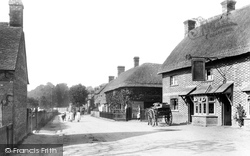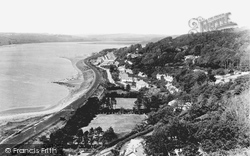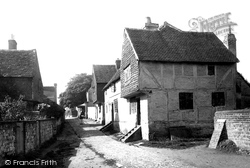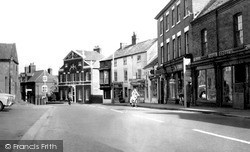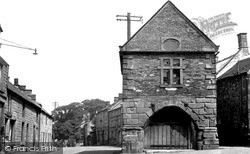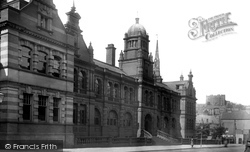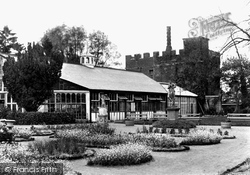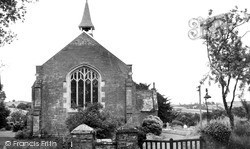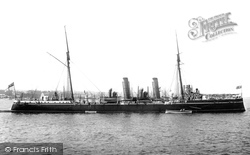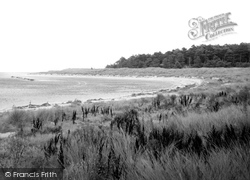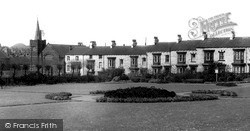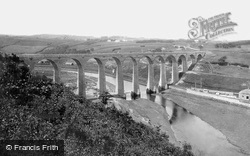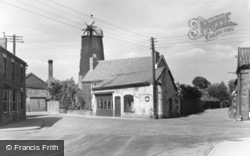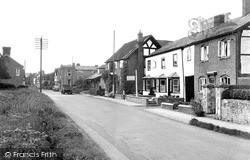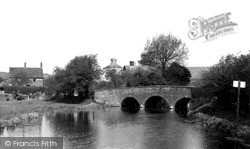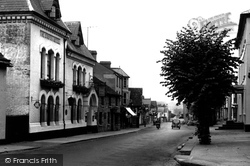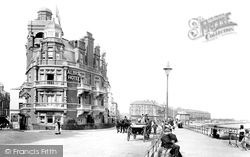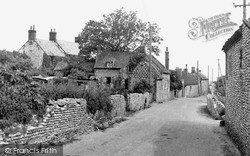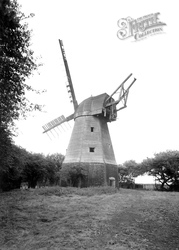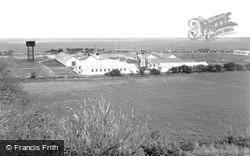Captions
388 captions found. Showing results 161 to 180.
The decorative headers on the brick façade of the inn make an interesting chequered pattern.
The village stands on the east side of the Towy where the river breaks out to sea through a widespread expanse of sandbanks at low tide.
Cobbles, brick, timber and tile - an enchanting corner of Bletchingley over one hundred years ago.
The plain red brick house is, however, a veritable gem, built around 1780 and prominent towards the left of the photograph.
The sandstone and brick structure originally had open archways on the ground floor, like the similar building in the centre of Bakewell.
Built of red brick, the Shire Hall was designed by local architects H Barnes and F E Coates, and was completed in 1898.
Rye House 1904 The front aspect of the mid-15th-century red brick gatehouse of Rye House, the scene of the ill-fated 1683 Whig conspiracy to ambush Charles II as he returned to London from Newmarket
The apparent bricks in the wall are in fact neatly dressed stones; the west window tracery is carved from a pale freestone.
During the Great War she was deployed in the Mediterranean, and was sold for breaking up in 1920.
Backed with a wind-break of Corsica pine planted by Thomas William Coke in the mid 19th century, this area is a breeding ground for birds such as terns, redshank and oystercatchers.
This handsome terrace of Victorian houses, built in distinctive white 'Pease' brick overlook the Coronation Park.
The first brick was laid in 1882 and the first locomotive crossed the thirteen-arched viaduct in 1884.
The mill was a Lincolnshire-style brick tower with an onion-shaped cap. It had five patent shuttered sails, as is indicated by the five-way cross on the front of the windshaft, and a fantail.
There are a number of lovely timber-framed buildings in this village, and many more that were once of timber, until a brick façade was added at a later date.
The village is in a Conservation area, with plenty of brick-built thatched houses in its centre.
Hence, Hay has an assortment of hotels; the brick-built Crown is of a high enough standard to warrant its RAC endorsement.
Past the Georgian remains of Sea Houses, at the junction of Royal Parade with Seaside, is the flamboyant Albion Hotel, now renamed the Carlton Hotel, its red brick all colour- washed.
Flint and brick used together can produce charming patterns, as we can see on the gable-end in the centre of this picture.
The tarred octagonal single-storey brick base remains on site and is used as a storage building.
Today just a few brick ruins mark the existence of the camp.




